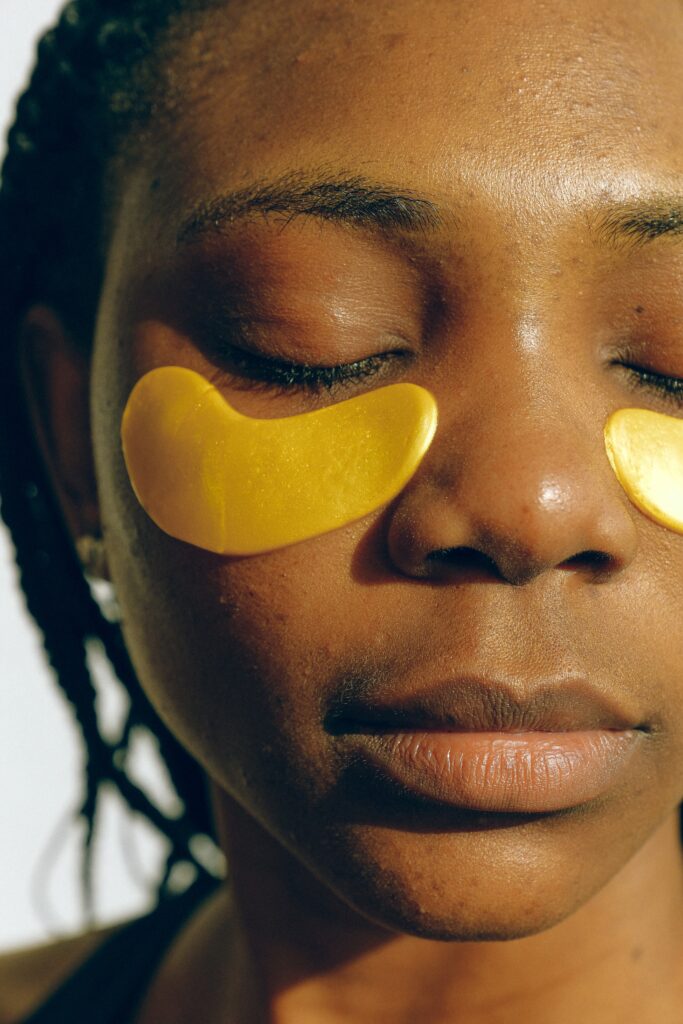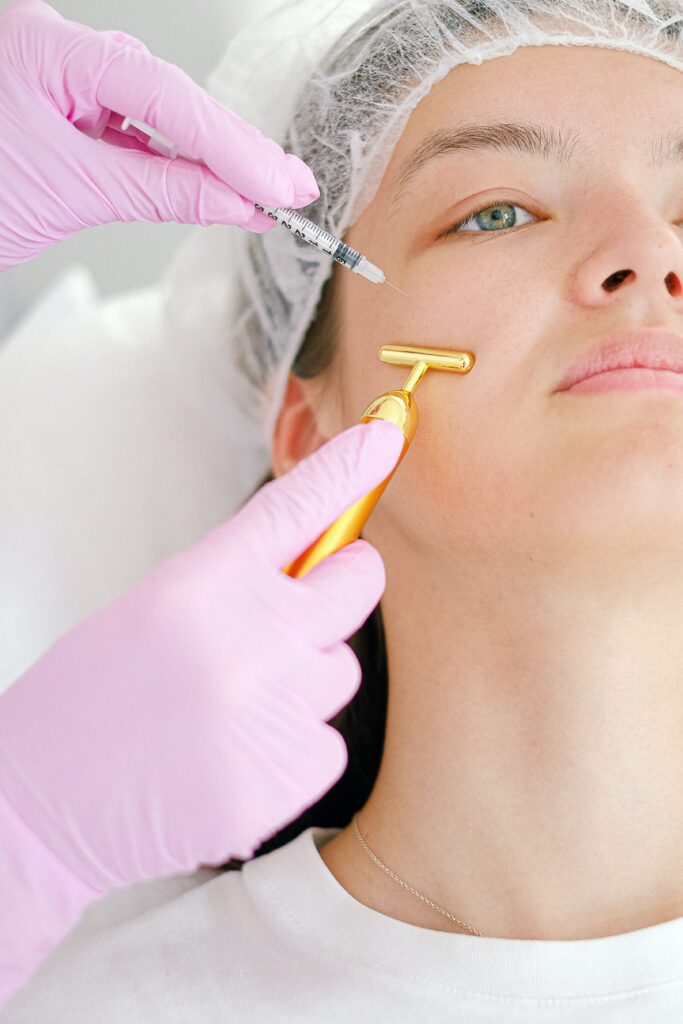
What Causes Under Eye Dark Circles?
There are several different reasons for under eye darkness. Actual hyperpigmentation to the under eyes could be a factor or someone may have wrinkled, thin skin in the undereye area revealing the underlying vessels creating a dark hue. Infra-orbital fat herniation may be casting a shadow under the eyes.
People with actual hyperpigmentation to the under eyes may have increased melanin there due to allergies or irritation of the skin especially when rubbing. PIH (Post inflammatory hyperpigmentation) may occur which is the overexcitability of melanocytes in an area in response to inflammation as a method of protecting the area. Interestingly enough, dark circles can often be seen in mouth breathing children who experience inflamed mucous membranes in the nose (allergic rhinitis). Can also occur in response to surgery or any damage to the area especially when affecting blood flow to the area and can often occur to those with darker skin though it occurs universally.
Tear trough is often the depression that extends from the medial canthus (inner corner of eye) inferolateral stopping about midline of pupil. The depression itself can almost cause a shadowing effect making the area darker in appearance. Similarly, someone with protruding infraorbital fat herniation may cause the tear trough the appear even deeper causing more of a pigmented appearance.
In general though, because the undereye skin is thin, the sheer translucency can reveal the capillaries, muscle and vessels bellow cast darkness to under eyes. When skin has lost laxity, is wrinkled, this can heighten the darkened appearance.
Treatment Methods
Hyperpigmentation in Under Eyes
- Bleaching creams with hydroquinone can be very effective in lightening the skin however it has been seen to contain mercury which is toxic for humans and may be carcinogenic. Must take a break after 3 months of use or you may get bounce back hyperpigmentation. Hydroquinone tends to be the last option as it is effective but again, the possible risks it carries tends to outweigh the reason for using. Other topicals you can use that are safe are vitamin C and E (antioxidants that are also seen to have lightening/brightening effects), kojic acid and azelaic acid to exfoliate the skin. Because of the thin skin you must use the products sparingly in this area and be very cautious not to get close to lashes or in eye as the exfoliants may cause damage to eyes. The Vitamin C & E can be used everyday topically as long as there aren’t any irritants added to the serum. For some vitamin C may be sensitizing so a test spot is always a great way to test out a serum. For the kojic acid or any other exfoliants I’d recommend first starting with 2-4x per week depending on how the skin reacts to the exfoliant. If it’s too sensitive, decrease amount of days that you’re using product as irritation may cause post inflammatory hyperpigmentation.

Tear Trough Depression
- Undereye hyaluronic acid fillers may be a great solution to improve tear trough depression, however, not everyone can be a good candidate for under eye fillers. The patient shouldn’t be allergic to hylenex, which is the reversal solution for hyaluronic acid. Especially around the undereyes you want to make sure you can easily use if an issue arose. People who have allergies to bee stings may have to avoid hylenex depending on severity of allergy and severity of situation at hand requiring hylenex use. Choice of hyaluronic acid is also important. Thin, minimally hydrophilic fillers in this area are key as the last thing we want to do is to create more puffiness to the area. Someone who has allergies and tends to get puffiness or edema in the under eyes may not be a good candidate. Similarly someone who wakes up in the morning and tends to have puffy eyes may also not be a good candidate as that signals that their eyes tends to hold on to or draw in fluid. With HA fillers this may cause the area to look even puffier. Sometime, treating the depletion in cheek stability can also improve under eye appearance. Juvederm Volbella and Beletero are great options for under eyes.
Thin skin
- PRP injections to thin, wrinkled skin is a great way to stimulate fibroblasts and collagen, improving the integrity of the skin. PRP (platelet rich plasma) involves drawing blood, separating blood cells from growth factors by spinning solution in centrifuge and injecting the separated growth factors into an area to improve fibroblast proliferation. PRP can also help brighten skin by reducing melanin production. Several studies found that PRP improved chloasma (hyperpigmented brown patches to skin). The TGF-B1 (Transforming Growth Factor B1) found in PRP can inhibit melanin production. PRP also has PDGF which stimulates collagen and hyaluronic acid production.
- Polynucleotides can also be injected as a filler under the eye. It is not as hydrophilic as HA fillers. they are long chain polynucleotides treated intradermally. This treatment is for dark circles caused by slightly sagging, thin skin. They increase fibroblast activity therefore increasing collagen production as well as contributing to the regeneration of glycoproteins, proteins and fibrils. In a comparison study, the polynucleotides were seen to generate more elasticity and collagen synthesis than HA fillers.
- Laser Resurfacing can help improve and reduce wrinkles therefore improving the integrity of the skin. A low fluence 1064nm can improve pigmentation
Also Read: Conquering Facial Hyperpigmentation: The Road from Discoloration to Radiance





You must be logged in to post a comment.